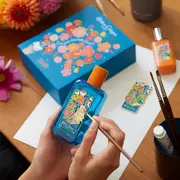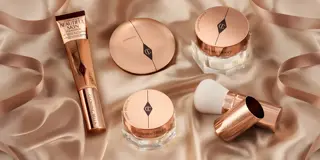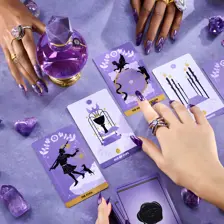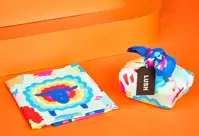Gifting trends with beauty
3 minute read
In the post-COVID environment, gifting accounts for an ever-increasing proportion of customer spend. The gifting occasion has evolved. Having missed out on so many treasured moments in 2020 and 2021, customers are celebrating the small moments more than ever – 25% of Brits reported they would make a bigger effort to compensate for the pandemic (Kam Media, 2021). We are seeing this filter through both consumers celebrating others, as well as treating themselves through self-gifting.
The beauty industry is a pivotal market that is leveraging this shift in the desire and frequency to gift. Consumers are demanding more from their purchases than just the gift itself, and beauty brands are harnessing this demand through innovative ways to incentivise purchases.
Targeting Nostalgic Emotions
We are seeing many beauty brands harness emotions of nostalgia in their gifting options, to capitalise on consumer reminiscence. By using familiar motifs of childhood from comics to games, brands can tap into that longing for fond memories. Collections use retro characters, colours and fun value-adds in packaging and GWP (gift with purchase) to offer an additional gift to the product - a nostalgic emotional experience. Kylie Cosmetics chose the graphic designs and bold colours of Batman comics in their Halloween collection, whilst Shu Uemura created a Sailor Moon soft toy GWP.
As well as missing out on family moments, brands can tap into other areas of longing generated by COVID, to further highlight their understanding of customers’ desires. Beauty brands like Benefit have focused on travel (and the lack of it due to the pandemic), with their recent collection focusing on postcards and air stamps. By understanding consumers’ emotions in the current climate, brands can strengthen their consumer relationships.
Customisation
Customised gifting is increasingly popular in the market - 62% of surveyed Americans stated they preferred a customised gift (Vistaprint, 2022). Consumers can now gift on a more personal and thoughtful level, and it is swaying them in their purchases.
We are seeing options to tailor products to individual needs for self-gifting, such as Function of Beauty’s ‘create-your-own formula’ haircare. For gifting to others, brands such as Charlotte Tilbury offer sentimental touches, with the opportunity to engrave their products with personalised messages or initials. In re-positioning products as not just single-use items but personal treasures, beauty brands are strengthening the incentive to purchase for their customers.
Lengthening Consumer Interactions
As the occasion to gift and self-gift becomes more frequent, we are seeing beauty brands mirror this in ways to strengthen their relationship with consumers.
One method is gamification. Consumers are looking for more exciting offerings and products that create a sense of fun and challenge are ideal to fulfil this demand. We created a tarot deck for Victor & Rolf to accompany their Good Fortune perfume, creating conversation and excitement of discovery each time the customer turns over a card.
Reusable Packaging
Online beauty websites are creating more sustainability-specific gift edits within their site navigation, highlighting how influential this factor has become to consumers when making a gift purchase.
Reusable packaging is being employed more and more frequently. Brands are turning their packaging into an addition to the gift, not a disposable by-product. Lush is wrapping bath bombs and gift sets in textile ‘knot wraps’ that can be reused, displayed, or even worn. adm worked with Atelier Cologne to create a bespoke drawstring pouch for their fragrance and candle set – the beautifully detailed design makes the packaging a gift itself. Reusable packaging is being used as a value-add to incentivise purchase, whilst also targeting the eco-conscious consumer.
How should brands position themselves in the gifting market moving forward?
It is clear the beauty consumer is driven more than ever by emotion, from personal sentimentality to efforts to minimise their environmental impact. Brands should be taking advantage of these trends, to demonstrate they understand the motivation of their customers and hence increase customer lifetime value.





